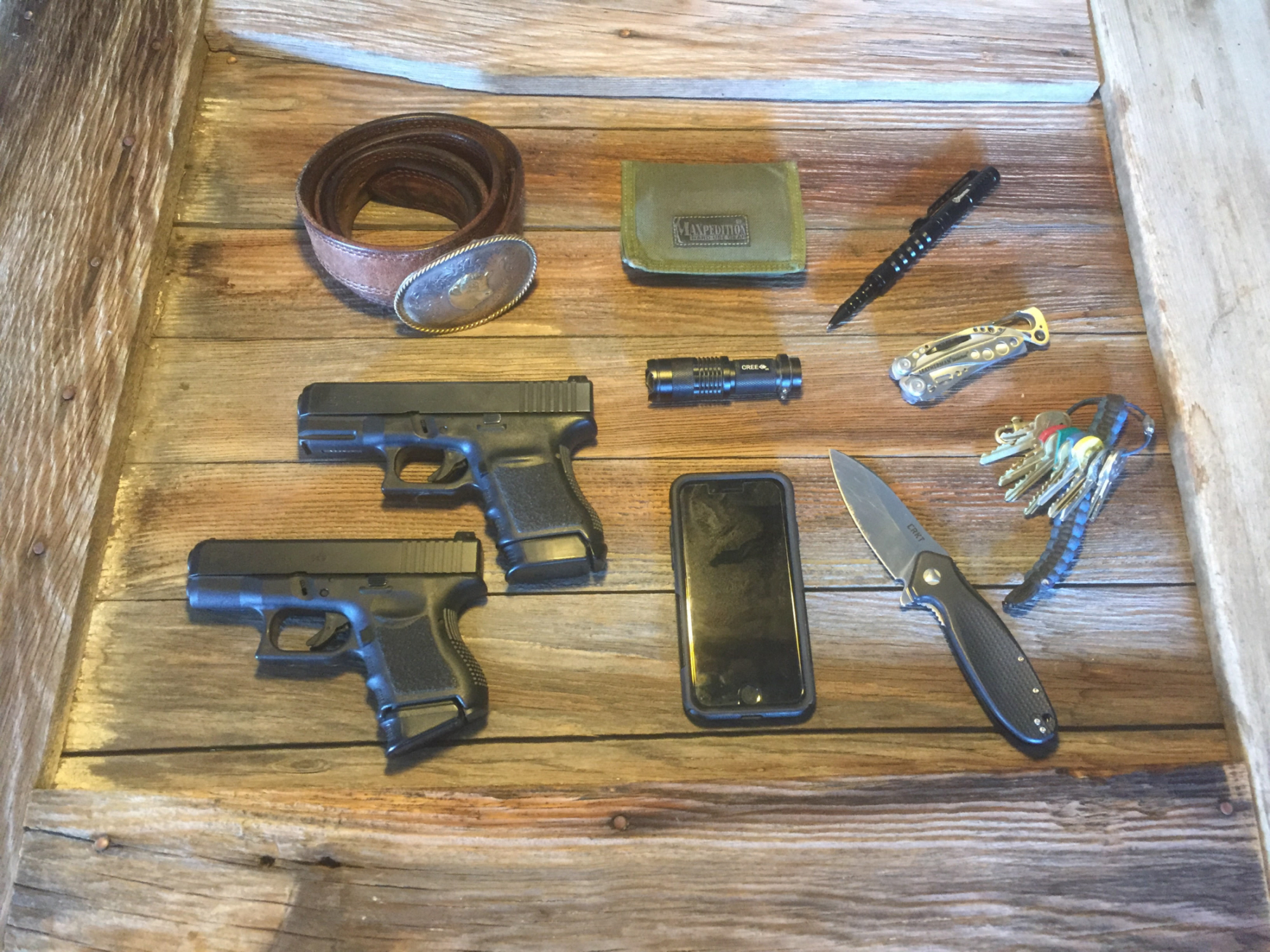We all know the importance of cleaning your guns, but what method is the best? Do you do it the way your Dad or Grandfather taught you? Were you given a gun cleaning kit with your first gun and that’s what you stuck with? Did a friend tell you which type to use? Or did you explore the Internet for the all time best method of cleaning your guns and that’s what you use? These are all good ways to find out information but let’s explore this question then you can be the judge.
Rod Cleaning Systems?
Many people swear that the only 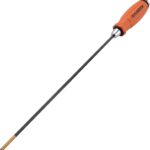 way to clean a gun is by using a cleaning rod. When I was young that was the only way to clean your gun so we did not question these rods. Cleaning rods do work great and now they are usually in the form of a one-piece coated rod or rods that screw together in sections to form a long cleaning rod.
way to clean a gun is by using a cleaning rod. When I was young that was the only way to clean your gun so we did not question these rods. Cleaning rods do work great and now they are usually in the form of a one-piece coated rod or rods that screw together in sections to form a long cleaning rod. 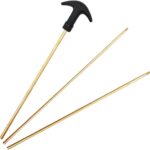 Whether they are one-piece or in sections they do a similar job in the end. A one piece rod is usually Teflon coated so it does not scratch the crown or the barrel. The cleaning rods that are in sections are usually made out of brass or aluminum and will not usually scratch your barrel. But it is a good idea to use a
Whether they are one-piece or in sections they do a similar job in the end. A one piece rod is usually Teflon coated so it does not scratch the crown or the barrel. The cleaning rods that are in sections are usually made out of brass or aluminum and will not usually scratch your barrel. But it is a good idea to use a  bore guide (protector) to protect your barrel crown when using these metal cleaning rods. You place them in the end of your barrel and then slip the cleaning rod inside the bore guide and into the barrel, this keeps the rod centered in the barrel and not scraping the barrel or crown of your gun. Cleaning rods can do a fine job as long as you are careful when using them.
bore guide (protector) to protect your barrel crown when using these metal cleaning rods. You place them in the end of your barrel and then slip the cleaning rod inside the bore guide and into the barrel, this keeps the rod centered in the barrel and not scraping the barrel or crown of your gun. Cleaning rods can do a fine job as long as you are careful when using them.
Cable Cleaning Systems?
Some years ago gun cleaning cables were developed, this was something new that many people have not seen before. There are a few companies that produce these gun cleaning systems but my favorite is from 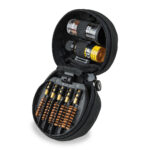 OTIS Technology. They make high quality gun cleaning kits with excellent customer service to back it up. They produce every kind of gun cleaning kits that you might want, my favorite is the OTIS Tactical Gun Cleaning kit for rifles, shotguns and handguns. It has everything
OTIS Technology. They make high quality gun cleaning kits with excellent customer service to back it up. They produce every kind of gun cleaning kits that you might want, my favorite is the OTIS Tactical Gun Cleaning kit for rifles, shotguns and handguns. It has everything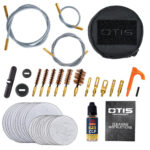 you would want to clean your guns and do a very thorough job I might add. An advantage to the cable system is that you do not have to teardown your gun so that you can clean from breech to muzzle. Because the cable is flexible you can just open up the action and put your cable end into the breech and slide it down the barrel to the muzzle. A pretty cool way to clean your gun.
you would want to clean your guns and do a very thorough job I might add. An advantage to the cable system is that you do not have to teardown your gun so that you can clean from breech to muzzle. Because the cable is flexible you can just open up the action and put your cable end into the breech and slide it down the barrel to the muzzle. A pretty cool way to clean your gun.
Supplies Needed?
No matter if you use a rod or a cable to clean your guns, there are certain things that you will need with both systems. They both need brass jags, brass brushes, cleaning patches, scrubbing brushes, cleaning solvent and/or CLP solution, wipe down rags, and shotgun swabs if you are cleaning shotguns.
Many people these days use one product for cleaning, lubricating and preserving (a CLP). There are many of them on the market to choose from if you want to go that way. I use Hoppes #9 solvent for cleaning my bore and other very dirty areas, then I use Break-free CLP for lubrication and preserving. This method works very well as long as you make sure the solvent is wiped-out before you add your Break-free. There are many different cleaning product to choose from to clean your guns, this is only what I use.
Things To Overcome
My Dad taught me to clean his guns at the age of 10-years-old so naturally his way was the only way to clean them. I suppose you have heard, My way or the highway! and in those days that was the way it was. Anyway, that method was to use his aluminum rod sections that screwed together to form a longer gun cleaning rod. This method worked and worked really well for 59 years of my life. If you were a “Cleaning Rod Guy” like I was, you would have a difficult time thinking that a cleaning cable can do as good of a job as a cleaning rod can do.
So when I was introduced to OTIS Technologies Cable System in some YouTube videos, I was very skeptical. But for some reason I kept going back and watching these same videos over and over again and their methods began to make sense to me. So there was “old school” vs “new school” going through my mind and I began to see how cables might have a place in my gun cleaning world.
I had two types of rifles growing up, bolt action and lever action rifles and then one 22LR/mag revolver. I was always told to clean a rifle from the muzzle to the breech no matter what kind of gun it was, so that worked for me. As I got a little older I was told by my girlfriend’s father (he was a policeman) that you should always clean your guns from breech to muzzle to keep them cleaner. So I began to change my cleaning methods from what my Dad taught me as a kid and it made sense. But this was easy with the bolt action rifles but when I got to my lever action rifles, that was very difficult. With a bolt action rifle you can just remove the bolt and run your rod down the barrel. But a lever action rifle was a bit more tricky to remove the bolt, especially a Winchester 94, which is what I had growing up. It was necessary to take out screws and push out pins to get the bolt out, and that was more difficult. So I just cleaned them from muzzle to breech and it still worked, I just had to be more careful. Then came OTIS Technologies and I found out that I could clean my lever action rifles from the breech to the muzzle very easily. How cool was that!
The Cleaning Process
The rod gun cleaning system is the most common gun cleaning system on the market today. And it is something that has been passed down from generation to generation. This process takes a cleaning rod, copper jags, copper cleaning brush, cleaning patches, cleaning solvent, CLP oil and a wipe down cloth for final cleaning. 1) The first thing to do is unload the rifle and make sure that it is clear before starting to clean your firearm. You must remove your magazine (if equipped) and any ammunition that may be loaded within the firearm including in internal magazines. Make sure you do a thorough visual check, and feel with your finger that there are no bullets in the chamber before you go to the next step. 2). Using a cleaning utility brush or cleaning swabs, remove any excess dirt, etc. from your firearm. Place a copper slotted jag on your cleaning rod and a cleaning patch in the slot. Apply some bore cleaning solvent to the cleaning patch, and run the patch through your barrel and let set for a couple of minutes. Next use a copper brush and run it completely through the barrel to loosen up the fouling in the barrel.. Follow up this with several dry patches to make sure your barrel is clean and dry. Use some swabs to clean hard-to-reach areas and ensure you get your barrel/chamber as clean as possible. 3). Once you’ve completely cleaned your action, bolt, receiver, and barrel, you’ll want to properly oil & lubricate the moving parts of your firearm. Look for worn metal areas on bearing surfaces such as your action, and bolt lugs. On a well-used firearm you’ll see bare metal through the finish in some places. 4). After you’ve cleaned and lubricated your firearm, wipe it down with a clean, dry cloth. This removes residue and oils/moisture from fingerprints that you may have missed in steps two and three. A quick wipe and polish of any wooden furniture on your rifle is also a recommendation. 5). Once everything is cleaned, and wiped down, it’s time to start reassembling your rifle. It is a good idea to carefully inspect each piece as you put it together and make sur there are no problems with the pieces.
The cable gun cleaning system is an easy three-step cleaning process, it is basically similar but takes some different tools. Before you began cleaning there are a few things that you need to do. First make sure your firearm is unloaded, remove the magazine or bullets and inspect that there are no bullets in the gun. Then inspect the firearm and look for any excess dirt or debris on the outside, if you see any, use a utility brush to clean it off. Next remove the bolt or just open the action on the firearm. 1) Place their slotted end on one end of the cable. put on one of their special round patches in the way as directed , add some bore cleaning solvent or CLP to the patch. place the opposite end of the cable into the barrel on the breech end push it through the barrel until the patch is at the end of the barrel. then draw it through the barrel, from breech to muzzle. 2) Remove slotted-end and put copper brush on the cable and draw through barrel from breech to barrel-end. Wait for a few minutes to let the chemicals work. 3) Then put the slotted tip back on along with a clean dry patch, as directed and draw the cable through the barrel from breech to muzzle and repeat this step until the patch comes out clean. End result is a clean gun.
, add some bore cleaning solvent or CLP to the patch. place the opposite end of the cable into the barrel on the breech end push it through the barrel until the patch is at the end of the barrel. then draw it through the barrel, from breech to muzzle. 2) Remove slotted-end and put copper brush on the cable and draw through barrel from breech to barrel-end. Wait for a few minutes to let the chemicals work. 3) Then put the slotted tip back on along with a clean dry patch, as directed and draw the cable through the barrel from breech to muzzle and repeat this step until the patch comes out clean. End result is a clean gun.
Final Comments
So what are your final thoughts, I think either way works good. Both of these gun cleaning systems will work to clean your guns, it just depends which one you like best. If you don’t like your gun cleaning method then you won’t clean your gun and that’s not good. My favorite gun cleaning system right now is OTIS Technology cable cleaning systems. They have so many different gun cleaning kits that you are bound to find one that works for you. But the best thing about these systems is that you can clean your gun without taking it apart. Being able to do that saves time and that means a lot these days.
But there is one time that I still use my one piece, Teflon coated cleaning rod and that is if I have a new rifle. I have adopted a set of specific procedures where you need to clean your gun a certain way before you even fire the gun and for this I only use my one piece cleaning rod. Then I change to the OTIS System after the rifle is fired.
So which method is the best? Is there a clear winner? Absolutely not! I think they both have their place in the gun cleaning world. You should use whatever method feels best to you. But don’t take my word for it, check it out yourself, you will be happy that you did.
If you have any questions about this post or anything related to Everyday Carry (EDC)/Concealed Carry, feel free to leave a comment below and I will be happy to get back to you.
All the best,
Larry
Founder of Everyday Carry Essentials
